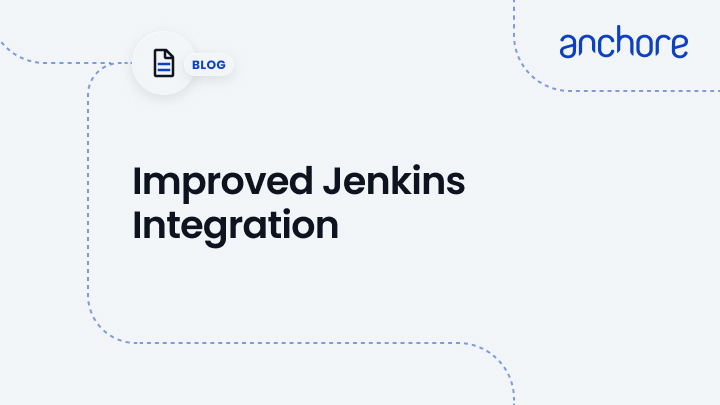Today we have released an update to our popular open source Jenkins plugin adding a number of powerful new features.
Using Anchore’s freely available and open source Jenkins plugin you can secure your Jenkins pipeline in less than 30 minutes adding image scanning including not just CVE based security scans but policy-based scans that can include checks around security, compliance and operational best practices.
The first new feature to highlight is an updated user interface that improves both the aesthetic and the functionality of the UI. In the first screenshot below you can see that while the build has succeeded we have raised a number of warnings.
- The container was built from a base image with the tag latest rather than from a specific named tag
- The Dockerfile does not include any health check instructions which would simplify ongoing monitoring of the service.
- The acme-logging package has not been installed which is a recommended package for this organization.
Policies are customizable, along with whitelists, and are typically defined by the Security or Operations team.
The Policy evaluation summary is always produced by the Anchore plugin, however, there are other reports that a user can define to be run during the CI/CD pipeline.
In the first example, you can see a package manifest that has been produced – both in the form of a searchable web interface but also as a JSON file in the Jenkins project workspace that contains machine-readable output.
In the final example, we see a report detailing the difference in packages between the base image and the final image produced by the build.
Select: Manage Jenkins > Manage Plugins > Updates
If you are already running the Anchore Jenkins plugin then you can update the Anchore plugin directly from the Jenkins web interface. At the time of writing the latest version of the plugin is version 1.0.7.
If you are not running Anchore’s plugin, there is detailed instructions on the following page.
The second interesting new feature is support for Jenkins Pipelines. In our previous examples, we have illustrated the use of Anchore within a Jenkins Freestyle Project which is the traditional way of architecting a Jenkins build, using the Jenkins web interface to define projects, adding build steps, scripts, etc.
In the Pipeline model, the entire build process is defined as code in a Jenkinsfile. This file can be created, edited and managed in the same way as any other artifact of your software project. For example, you can check your pipeline definition into your source control system, dynamically create the build instructions based on the configuration of your application or perform countless other forms of automation.
Pipeline builds can be more complex including forks/joins and parallelism. The pipeline is more resilient and can survive the master node failure and restarts. Pipelines are written in Groovy scripts and to add an Anchore scan you need to add the following simple code snippet.
node {
def imageLine = IMAGE + ' ' + env.WORKSPACE + '/DockerFile'
writeFile file: 'anchore_images', text: imageLine
anchore name: 'anchore_images', policyName: 'anchore_policy', bailOnFail: false, inputQueries: [[query: 'list-packages all'], [query: 'cve-scan all']]
}Here the IMAGE is the ID of the container image that was just created. This could be in the form of an image ID (short or long-form), for example, 67591570dd29. Or the REPO/TAG can be used -for example, webapp/frontend:123456.
This code snippet writes out the anchore_images file that is used by the plugin to define which images are to be scanned.
The Dockerfile is read from the project workspace as is the file containing the policy that you wish to evaluate against the image, in this case, we have called the policy file anchore_policy and have stored this file in the project’s workspace.
This code snippet can be crafted by hand or built using the Jenkins UI.
Select: Pipeline Syntax from the Project
This will launch the Snippet Generator where you can enter the required parameters and press the Generate Pipeline Script button which will produce the required snippet.
It’s quick and easy to add Image scanning and policy to your Jenkins project and we’re here to help.
If you have any questions or would like to learn more you can join our slack channel by clicking the button below or fill out the form to send us a direct message.








